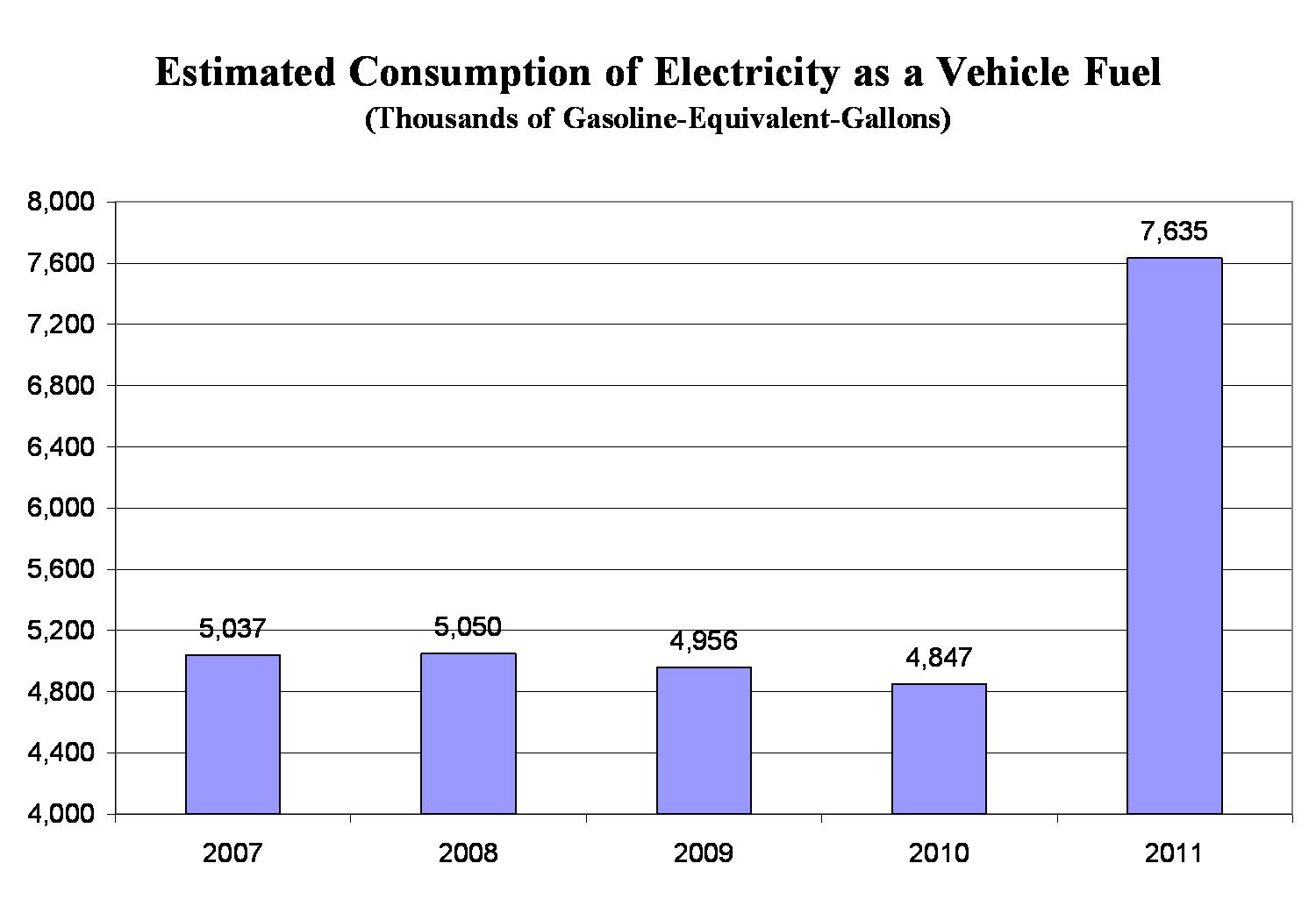Electricity used to power vehicles is generally provided by the electric grid and stored in the vehicle's batteries. However, electricity can also be created from a generator inside the vehicle that is powered by fossil fuels such as gasoline or diesel. [1]

|
|
Total consumption of electricity as a transportation fuel increased approximately 57% between 2010 and 2011.[2] |
As manufacturers continue to investigate innovative ways to increase battery power and vehicle range, electricity as a transportation fuel remains an extremely attractive alternative fuel that is emerging from research and development into full production.
One obvious advantage of using electricity is that it provides the potential for zero vehicle emissions, thus making it attractive in heavily polluted cities. Widespread deployment of electric vehicles could reduce U.S. oil consumption by up to 4 million barrels per day by 2050 (current U.S. gasoline consumption is approximately 9 million barrels per day). Initial benefits for reducing carbon dioxide (CO2) emissions are more modest, but significant, and would increase dramatically as the carbon intensity of the electric supply decreases. By 2050, annual CO2 emissions could be reduced by an estimated 400-600 million metric tons.[3]
However, it is important to note that the emissions produced by the electric grid vary depending on the source of electric power. For example, the electricity largely produced from the burning of coal (typically found in the Midwest) produces more harmful well-to-wheel emissions than electricity produced from nuclear, solar, wind, or hydroelectric sources. Therefore, if the vehicle operates in an area where coal or natural gas is the primary source for electric power, the vehicle may produce more well-to-wheel emissions than a hybrid electric vehicle that uses gasoline to power an electricity generator inside the vehicle.
Additionally, electric-powered vehicle motors are much more efficient than the traditional internal combustion engine. Electric-powered vehicle motors convert 75% of the chemical energy from batteries to power the wheels, whereas internal combustion engines only convert 20% of the energy stored in gasoline. In addition to engine efficiency, price is another advantage. The average retail price of electricity in the United States in 2013 was 10.08 cents per kilowatt-hour (kWh) and by practicing “off-peak hours” charging, consumers can access electricity prices even lower than that.[4]
There are several current disadvantages to electric-powered vehicles. To begin with they have a relatively short driving range, which is limited by the energy storage capacity of their batteries. In addition, recharging vehicle batteries can take hours which can be inconvenient to the driver. Also, many electric vehicles are underpowered relative to gasoline powered vehicles. Advances in battery technology, however, are closing all of these gaps.
[1] U.S. Department of Energy, Electricity, http://www.afdc.energy.gov/afdc/fuels/electricity.html , (May 22, 2013).
[2] U.S. Energy Information Administration, Alternative Fuel Vehicle Data, http://www.eia.gov/renewable/afv/users.cfm?fs=a&ufueltype=evc&uyear=2011%2c2010%2c2009%2c2008%2c2007, (May 22, 2013).
[3] Environmental and Energy Study Institute, The Role of Electricity as a Transportation Fuel, http://www.eesi.org/role-electricity-transportation-fuel-15-mar-2010, (May 22, 2013).
[4] U.S. Energy Information Administration, Factors Affecting Electricity Prices, http://www.eia.doe.gov/energyexplained/index.cfm?page=electricity_factors_affecting_prices, (December 11, 2014).